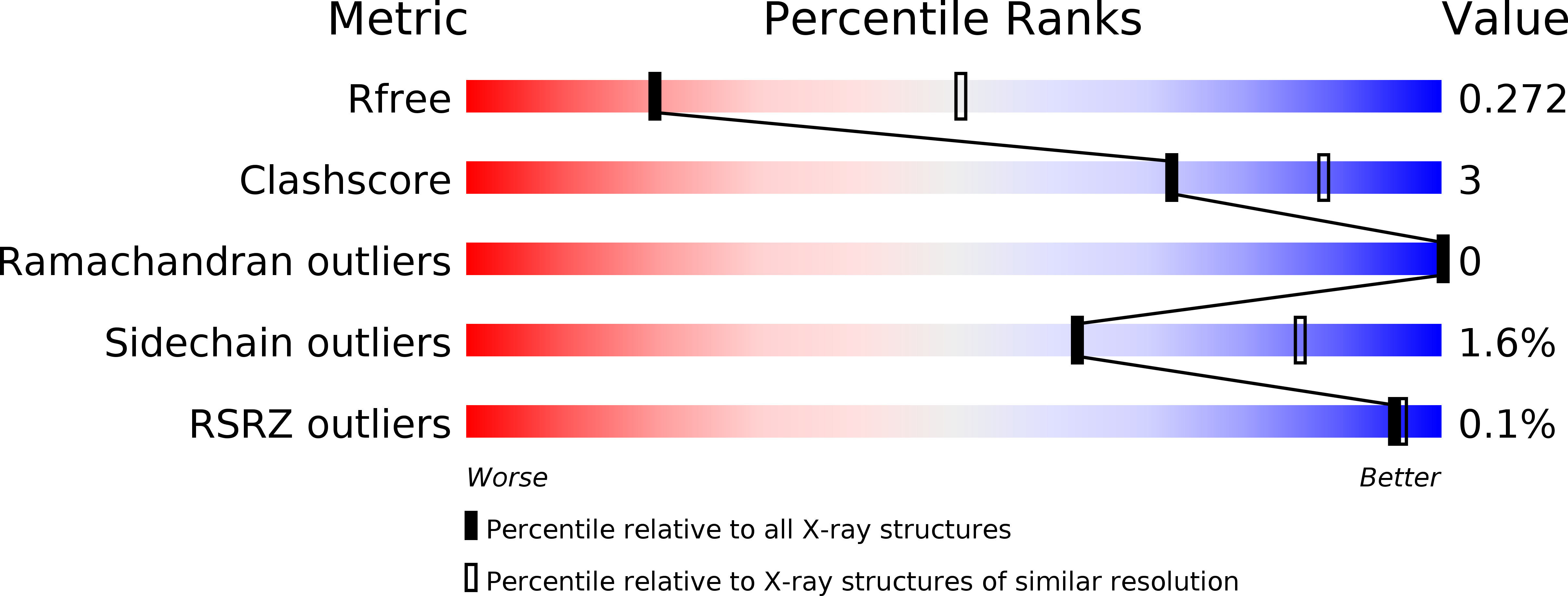
Deposition Date
2019-01-28
Release Date
2019-10-02
Last Version Date
2024-11-20
Entry Detail
PDB ID:
6QK8
Keywords:
Title:
Crystal structure of yeast 14-3-3 protein (Bmh1) from Saccharomyces cerevisiae with the Nha1p (yeast Na+/H+ antiporter) 14-3-3 binding motif Ser481
Biological Source:
Source Organism:
Host Organism:
Method Details:
Experimental Method:
Resolution:
2.92 Å
R-Value Free:
0.27
R-Value Work:
0.21
R-Value Observed:
0.22
Space Group:
P 1


